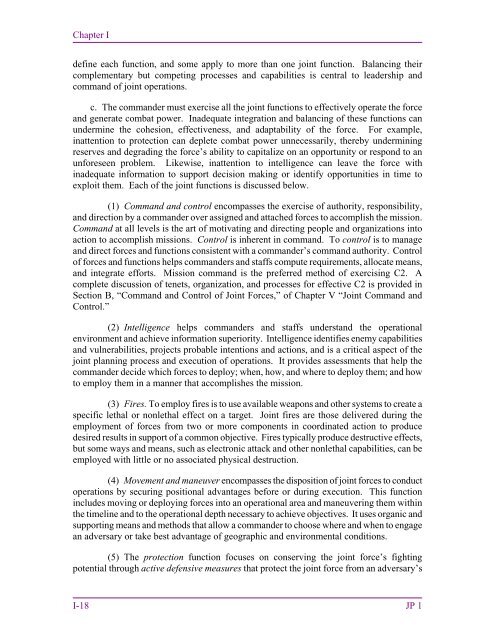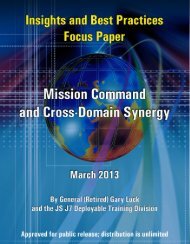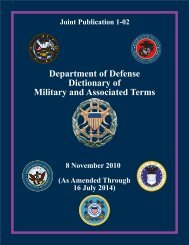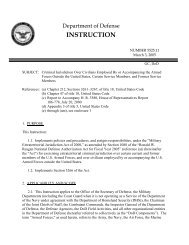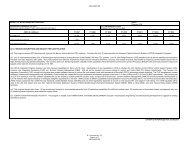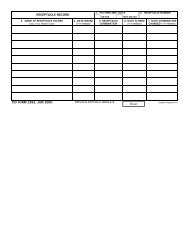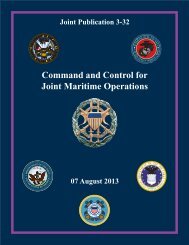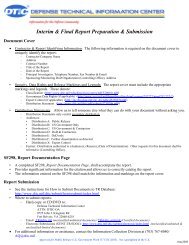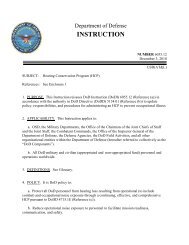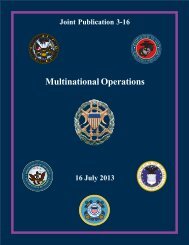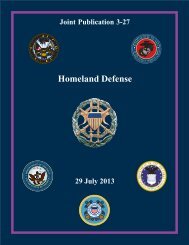JP 1, Doctrine for the Armed Forces of the United States - Defense ...
JP 1, Doctrine for the Armed Forces of the United States - Defense ...
JP 1, Doctrine for the Armed Forces of the United States - Defense ...
You also want an ePaper? Increase the reach of your titles
YUMPU automatically turns print PDFs into web optimized ePapers that Google loves.
Chapter I<br />
define each function, and some apply to more than one joint function. Balancing <strong>the</strong>ir<br />
complementary but competing processes and capabilities is central to leadership and<br />
command <strong>of</strong> joint operations.<br />
c. The commander must exercise all <strong>the</strong> joint functions to effectively operate <strong>the</strong> <strong>for</strong>ce<br />
and generate combat power. Inadequate integration and balancing <strong>of</strong> <strong>the</strong>se functions can<br />
undermine <strong>the</strong> cohesion, effectiveness, and adaptability <strong>of</strong> <strong>the</strong> <strong>for</strong>ce. For example,<br />
inattention to protection can deplete combat power unnecessarily, <strong>the</strong>reby undermining<br />
reserves and degrading <strong>the</strong> <strong>for</strong>ce’s ability to capitalize on an opportunity or respond to an<br />
un<strong>for</strong>eseen problem. Likewise, inattention to intelligence can leave <strong>the</strong> <strong>for</strong>ce with<br />
inadequate in<strong>for</strong>mation to support decision making or identify opportunities in time to<br />
exploit <strong>the</strong>m. Each <strong>of</strong> <strong>the</strong> joint functions is discussed below.<br />
(1) Command and control encompasses <strong>the</strong> exercise <strong>of</strong> authority, responsibility,<br />
and direction by a commander over assigned and attached <strong>for</strong>ces to accomplish <strong>the</strong> mission.<br />
Command at all levels is <strong>the</strong> art <strong>of</strong> motivating and directing people and organizations into<br />
action to accomplish missions. Control is inherent in command. To control is to manage<br />
and direct <strong>for</strong>ces and functions consistent with a commander’s command authority. Control<br />
<strong>of</strong> <strong>for</strong>ces and functions helps commanders and staffs compute requirements, allocate means,<br />
and integrate ef<strong>for</strong>ts. Mission command is <strong>the</strong> preferred method <strong>of</strong> exercising C2. A<br />
complete discussion <strong>of</strong> tenets, organization, and processes <strong>for</strong> effective C2 is provided in<br />
Section B, “Command and Control <strong>of</strong> Joint <strong>Forces</strong>,” <strong>of</strong> Chapter V “Joint Command and<br />
Control.”<br />
(2) Intelligence helps commanders and staffs understand <strong>the</strong> operational<br />
environment and achieve in<strong>for</strong>mation superiority. Intelligence identifies enemy capabilities<br />
and vulnerabilities, projects probable intentions and actions, and is a critical aspect <strong>of</strong> <strong>the</strong><br />
joint planning process and execution <strong>of</strong> operations. It provides assessments that help <strong>the</strong><br />
commander decide which <strong>for</strong>ces to deploy; when, how, and where to deploy <strong>the</strong>m; and how<br />
to employ <strong>the</strong>m in a manner that accomplishes <strong>the</strong> mission.<br />
(3) Fires. To employ fires is to use available weapons and o<strong>the</strong>r systems to create a<br />
specific lethal or nonlethal effect on a target. Joint fires are those delivered during <strong>the</strong><br />
employment <strong>of</strong> <strong>for</strong>ces from two or more components in coordinated action to produce<br />
desired results in support <strong>of</strong> a common objective. Fires typically produce destructive effects,<br />
but some ways and means, such as electronic attack and o<strong>the</strong>r nonlethal capabilities, can be<br />
employed with little or no associated physical destruction.<br />
(4) Movement and maneuver encompasses <strong>the</strong> disposition <strong>of</strong> joint <strong>for</strong>ces to conduct<br />
operations by securing positional advantages be<strong>for</strong>e or during execution. This function<br />
includes moving or deploying <strong>for</strong>ces into an operational area and maneuvering <strong>the</strong>m within<br />
<strong>the</strong> timeline and to <strong>the</strong> operational depth necessary to achieve objectives. It uses organic and<br />
supporting means and methods that allow a commander to choose where and when to engage<br />
an adversary or take best advantage <strong>of</strong> geographic and environmental conditions.<br />
(5) The protection function focuses on conserving <strong>the</strong> joint <strong>for</strong>ce’s fighting<br />
potential through active defensive measures that protect <strong>the</strong> joint <strong>for</strong>ce from an adversary’s<br />
I-18 <strong>JP</strong> 1


